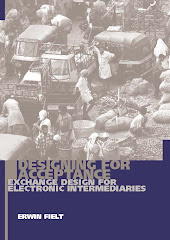The Business Model Canvas presents us with a great tool for the design and innovation of business models. As with every specific approach or tool, the Canvas can also bias or blind us. This can be caused by the features of the tool itself as well as from the way in which the tool is (wrongly) used.
As with every solution for solving a problem, the features of the Business Model Canvas are determined by the framing and scoping of the problem. This means that compared to other business model frameworks and tools, the Business Model Canvas has certain strengths and weaknesses (see also my discussion on different frameworks here). For example, some of specific areas where the Business Model Canvas could fall short in are related to business networks, service logic and business dynamics.
Another potential hazard with using the Business Model Canvas is that its use gets reduced to just filling out the individual building blocks. This will not provide a holistic perspective on value creation as it omits the relationships between the building blocks, e.g. Dell could offer direct sales because they targeted corporate customers going for a repeat purchase. Moreover, every business model has an underlying rational or story. This is easily missed when one limits oneself to the individual building blocks. The idea behind Southwest Airlines' business model can be described as making flying an alternative for taking a bus or car.
So while the Business Model Canvas can be very useful for supporting the design and innovation of business models, we should not fall into the trap that we therefore assume that we do not need to also think more broadly about the logic for creating and capturing customer value.
Thursday, May 23, 2013
Business Model Canvas or Business Model thinking?
Subscribe to:
Posts (Atom)





